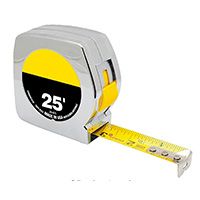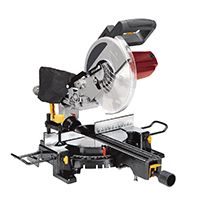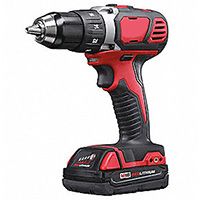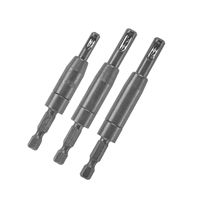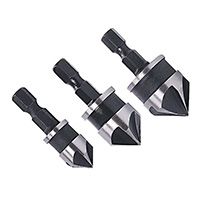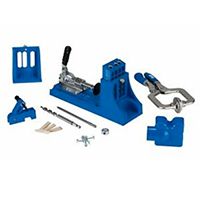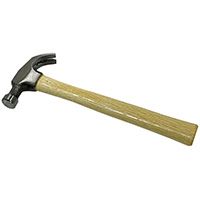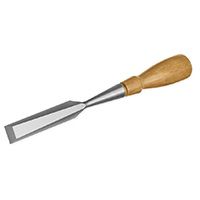We may be compensated if you purchase through links on our website. Our team is committed to delivering honest, objective, and independent reviews on home products and services.
Project details
Skill
Cost
Estimated Time
A folding laptop stand is a versatile and convenient addition to any home office or workspace. Whether you’re working remotely or streaming your favorite shows, having a dedicated holder for your laptop that can easily fold away can be very useful. This DIY project allows you to create a custom laptop table that meets your specific needs and style preferences.
In the video, DIY expert Jenn Largesse from House One demonstrates how to build this practical and space-saving piece of furniture. Below, we’ll list the tools, materials, and steps for making a folding laptop stand of your own.
*Costs in this article reflect an average of prices that our team found from hardware stores like Lowes and Home Depot, and on Amazon.com.
Materials You’ll Need
Before starting your DIY folding laptop stand project, gather the following materials:
- (1) 11 1/2-inch by 1 1/2-inch pine stair tread
- (3) 1 x 2 x 8 boards
- 1 1/4-inch pocket hole screws
- 2-inch wood screws
- (4) 1/4-inch by 1 1/2-inch carriage bolts
- (4) 1/4-inch flat washers
- (4) 1/4-inch hex nuts
- (3) 1 1/2-inch hinges
- (4) rubber feet (optional)
Recommended Tools
Wood Pieces Cut List
The first step in creating your DIY folding laptop stand is cutting the wood pieces to the correct sizes. Follow this cut list:
- 1×2 vertical legs – 4 @ 9 1/4 inches
- 1×2 leg horizontal supports – 4 @ 7 1/2 inches
- 1×2 base sides – 2 @ 22 1/2 inches
- 1×2 base ends – 2 @ 9 inches
- 1×2 ledge – 1 @ 16 inches
- 11 1/2-inch stair tread table top – 1 @ 8 inches
- 11 1/2-inch stair tread table top – 1 @ 16 inches
Using a miter saw to make precise cuts ensures all pieces are the correct length for proper assembly.
Assembling the Base of the Laptop Table
With your wood pieces cut to size, it’s time to assemble the base of your folding laptop stand. This section will guide you through creating the frame and attaching the folding legs.
Creating the Frame
- Prepare the leg pieces by laying the long sides of the base over two legs and drilling a hole through both layers.
- Repeat this process for the remaining side and leg pieces.
- Trim the top corners off the leg pieces to allow them to spin freely under the tabletop.
- Prepare the 1×2 leg and frame pieces by drilling pocket holes at each end.
- Assemble the legs by positioning the sides on edge and the horizontal pieces flat.
- Use a scrap block to position the horizontal pieces 11/2 inches from the top and bottom of the sides.
Assembling the Frame
- Secure the leg pieces together using glue and pocket hole screws.
- Repeat the process to create the second leg assembly.
- Attach the base ends between the longer base sides using glue and pocket hole screws to form a rectangular frame.
- Place the legs inside the frame and insert a bolt through each hole.
- Secure each bolt with a washer and nut.
Once assembled, the legs should swing open smoothly, allowing the base to stand upright when in use. Set the assembly on a flat surface and check that the base remains level with the legs unfolded.
Creating the Tabletop
The tabletop of your folding laptop stand consists of two sections: a fixed portion and a tilting portion for ergonomic typing.
Cutting and Preparing the Tabletop
- Cut the stair tread into two pieces—one 8 inches long (fixed) and the other 16 inches long (tilting).
- For the tilting section, prepare the square edge with pocket holes.
- Create a ledge on the tilting section by clipping the front corners of a 1×2 piece with a miter saw.
- Secure the 1×2 ledge to the tilting section of the tabletop using glue and pocket hole screws.
The ledge is optional, but it will prevent the laptop or other objects from sliding off the stand when the base is tilted.
Attaching the Tabletop to the Base
- Flip the tabletop upside down and position it on the base.
- Drill pilot holes through the frame and into the fixed section of the tabletop.
- Use a countersink drill bit to widen the holes slightly.
- Drive 2-inch screws through each hole and into the tabletop to secure it to the base.
Adding the Tilting Mechanism
- Bevel the end of a 1×2 piece at a 45-degree angle to create the support leg.
- Attach a hinge to the square-cut end of the support leg.
- Screw the hinge to the underside of the tilting tabletop section.
- Mark the location where the support leg meets the frame when tilted up.
- Using a drill and chisel, create a notch in the frame at this marked location.
- To keep the support leg from hanging down when not in use, attach a magnetic catch to the underside of the tabletop and the side of the leg.
Largesse notes that she would have had an easier time creating the notch for the support leg if she had done it before assembling the frame. If you decide to do this, make sure you make sure the notch on the base side ends up facing up and at the back of the assembly, opposite the tabletop hinges and ledge.
DIY Laptop Table Finishing Touches
To complete your DIY folding laptop stand, take these final steps:
- Sand all surfaces to ensure a smooth finish and prevent splinters.
- Apply a wood stain or paint to match your decor preferences.
- Add rubber feet to the bottom of the legs to prevent scratching on surfaces.
Test the joints and hinges a final time, and enjoy your new laptop stand.
